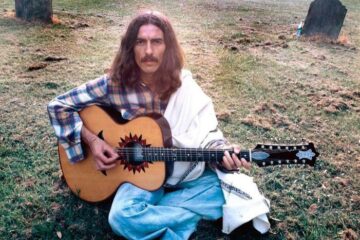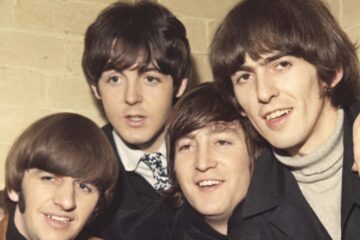On this day in 1980, John Lennon was murdered outside his home in New York City, and ever since Beatles fans have speculated about what might have transpired with the band had he lived. A rediscovered 1975 interview with Lennon from the BBC archive gives some clues.
Beatle John Lennon met Mark Chapman – the man who was to kill him – twice on the day he died, 8 December 1980.
The first time was at around 5pm. Having finished a radio interview in their apartment in the Dakota building in New York to promote their new album, Double Fantasy, the musician and his artist wife Yoko Ono headed out on to the street. Mark Chapman approached Lennon to ask if he could sign a copy of the new LP. The album was later used as evidence in Chapman’s trial, and reportedly went on to sell in a private auction for $1.5m in 2020.
Lennon, having signed it and posed for a picture with Chapman, jumped into a taxi with Ono to the recording studio to work on a new song called Walking on Thin Ice.
They returned home by car at around 10:30 pm. They had planned to go to a restaurant, but – according to a 2007 BBC interview with Ono – John was anxious to say goodnight to his younger son Sean before the five-year-old boy went to sleep. The couple stepped out of their vehicle, and began to walk towards the Dakota building, John carrying cassettes from the day’s recording session.
Mark Chapman was there waiting for him, holding a copy of JD Salinger’s novel Catcher in the Rye and the LP that Lennon had signed for him hours earlier. As the musician walked past him, Chapman pulled out a handgun, and fired multiple times into his back.
The senselessness of the murder sent shockwaves of disbelief around the world. It is difficult to overstate the profound effect The Beatles had as a cultural phenomenon, and what they meant to people. They weren’t merely pop stars. They changed the landscape of popular music. Their experiments with music, film, fashion, drugs and religion had been at the forefront of the 1960s, when the world seemed to be going through seismic changes. Their music had soundtracked a whole generation of people’s lives, helping them to connect to what was going on around them and to each other.
Following the shooting, grief-stricken fans flocked to the Dakota building to leave flowers and cards. For days, radio stations played nothing but The Beatles and John Lennon songs. In his hometown of Liverpool, 30,000 people gathered to hold a 10-minute silence, as did more than 225,000 in Central Park, close to where he was shot dead.




